The first overview of the street is available from the 1838 six-inch map and the 1843–54 valuations. By the early 1800s only one windmill survived and that was marked as in ruins on the 1838 five-ft manuscript map. Interestingly the 1838 six-inch map refers to windmills in ruins. Looking closer at both maps it does appear as if the second mill ruin was in the garden of no. 9 Cormac Street (see six-inch map). Moore Hall and ‘The Cottage’ were a hankering after rural life and as good quality houses were isolated from the town centre, but they made possible the attractive Willis-built Victoria Terrace of 1837–8.
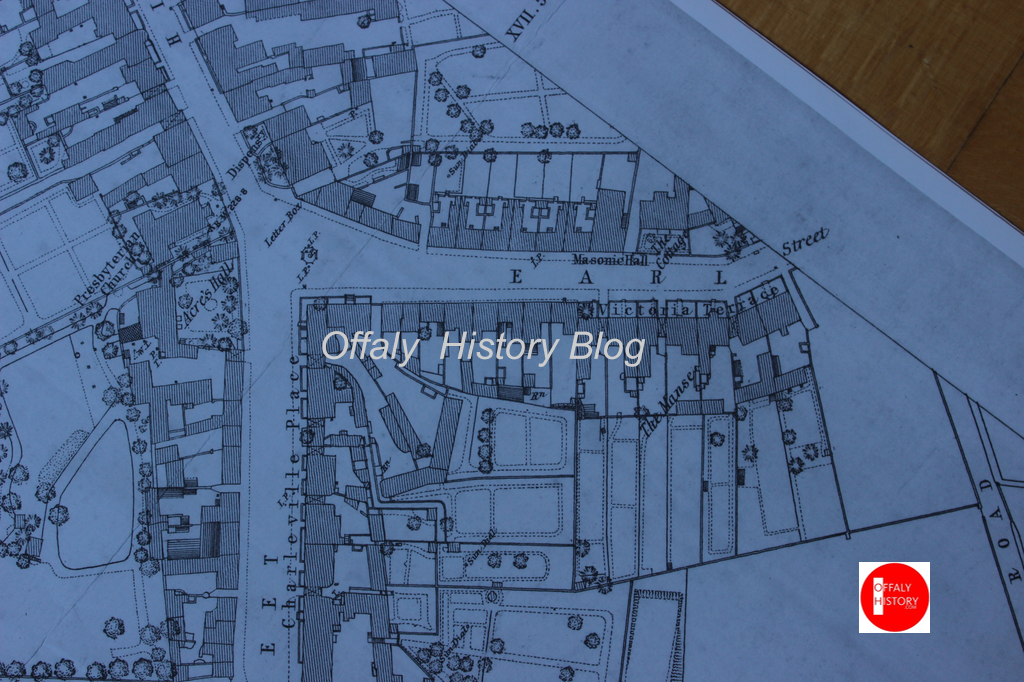
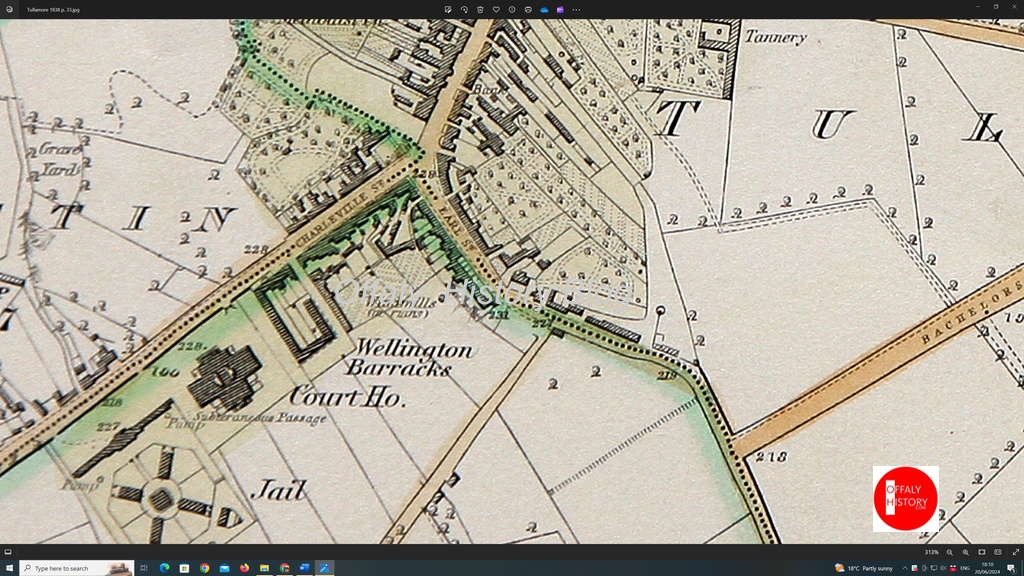
The sparseness of good quality housing in the street is reflected in the mixed occupations of residents to be found in the 1840s. The street had four substantial private residences of widows or unmarried women living privately, two doctors, one auctioneer and one attorney. No doubt the new Victoria Terrace of 1838 with its seven houses provided for people in business and the professions including one attorney and one Revenue official. The only institutional presence was the Quaker meeting house, held at first in a private house in the terrace and not one that was purpose built. Later the meeting house was relocated across the street at no. GV 8. In 1884 the Masonic lodge replaced the meeting house as was to happen in Birr in 1915.
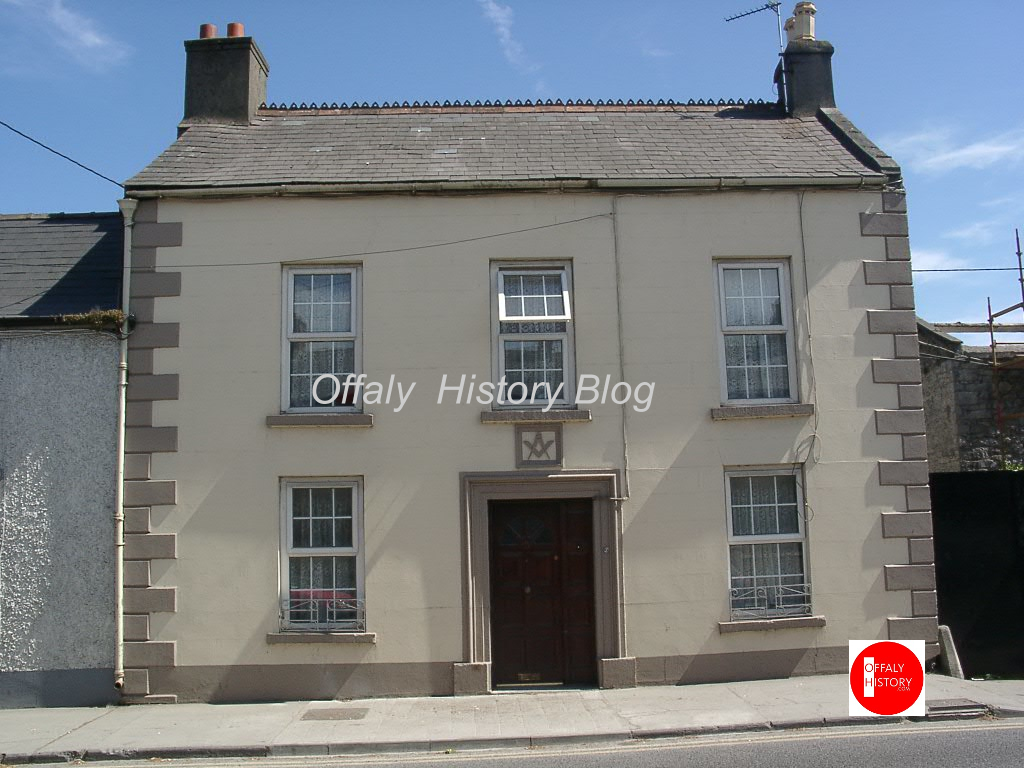
The first valuation survey of 1843 starts with house numbers 457 at what is now Heffernan’s/Costcutter filling station. This lot was comprised of ten small cabins and not rated. In 1843 there were 24 numbered houses on the northern side (numbers 457-471) between what is now the site (Crawford’s leasehold) of the Coláiste Choilm school and the junction with High Street, of which ten were cabins (exempt from rates) in the vicinity of the Costcutter filling station and demolished by 1854. The three acres in the vicinity comprised of a garden owned by Mrs Mary Ryan and a house and garden of Thomas Freer. These are shown on the O.S. manuscript town map of 1838 as more or less where Heffernan’s commercial units are located today.
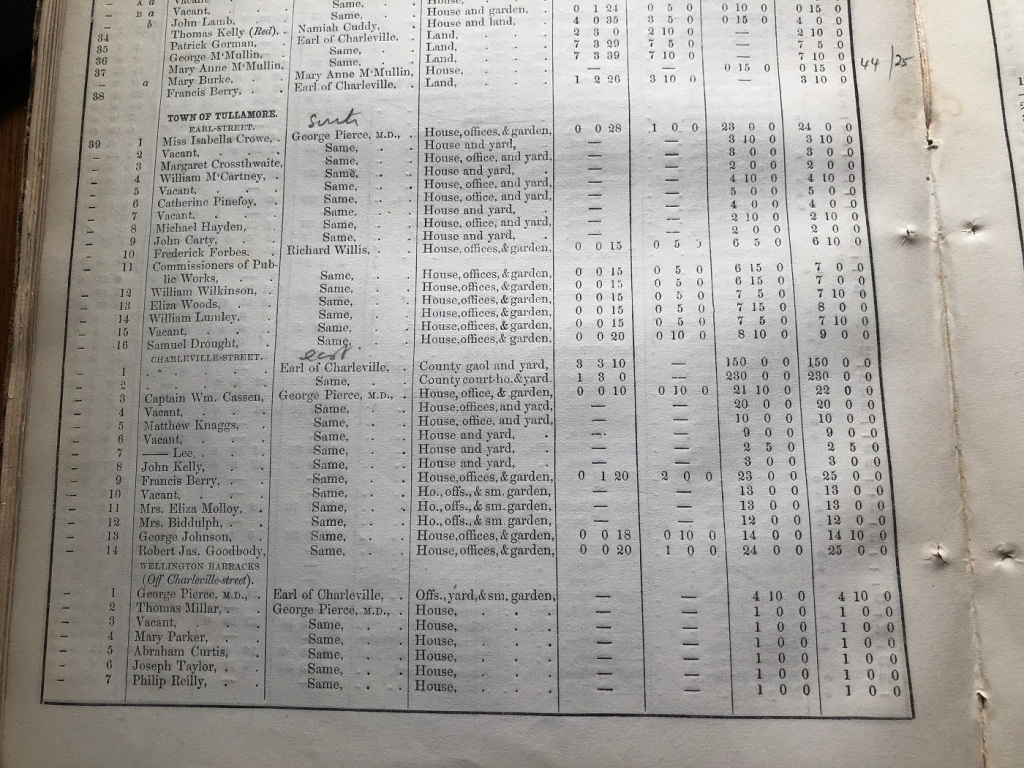
The north side of the street is at p. 127 of the printed Griffith valuation and comprised 23 houses in 1854. These houses were all of a poor standard with the exception of Moore Hall, the Cottage and the Quaker meeting house/Masonic lodge from 1884). The rest of the housing on this side was in two blocks from The Cottage to the junction with High Street. Moore Hall was valued at £15, The Cottage at £14 and the Quaker meeting house at £9. From here to the corner with High Street were the two blocks valued mostly at under £2 each and all residential on this side save one publican, a blacksmith and a dressmaker. Duigenan in Moore Hall in 1843 was a solicitor and his successor, John Ridley, a doctor. The 14 houses from the Quaker meeting house to no. 29 on the corner of High Street were in poor repair noted the valuers in 1843. All were held from Christopher Woods of High Street who was the owner of the 1756 Moore leasehold property in High Street (now Spollen’s pub). Woods had lodgers in the house beside the meeting house (GV 8).
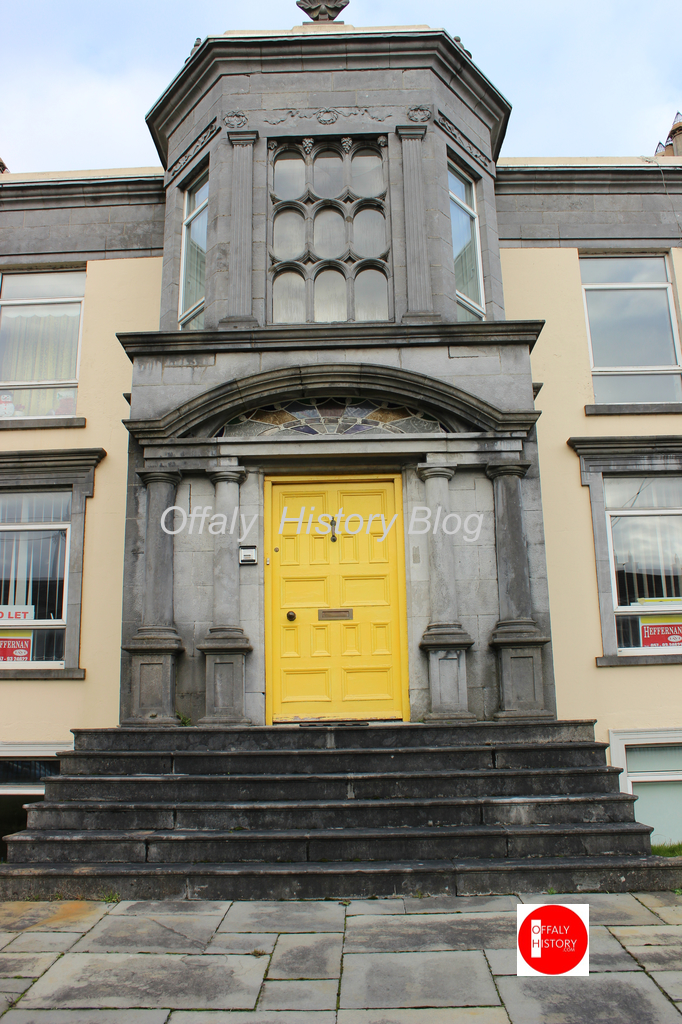
There were 16 houses on the southern side between the junction with Cormac Street and that with Spollanstown in 1843. These, as we noted earlier, were in two blocks. It appears that all 16 houses were rented from the two landlords. Of this number 11 were valued at £4 or more. The first house (that of Isabella Crowe, now Bannon’s, was valued at £23 while the Victoria Terrace houses were in the range of £6 to £8. The other eight Acres-Pierce houses in between were mixed, ranging from £2 to £5. All of the Acres-Pierce houses were two-story except two. All the houses on the southern side were private houses with the exception of the Quaker meeting house, then part of the second last house in Victoria Terrace (no. 15) but moved across the road by 1854. The southern side of the street in 1843 had one auctioneer, a doctor, offices for the Commissioners of Public Works, a revenue official and an attorney.
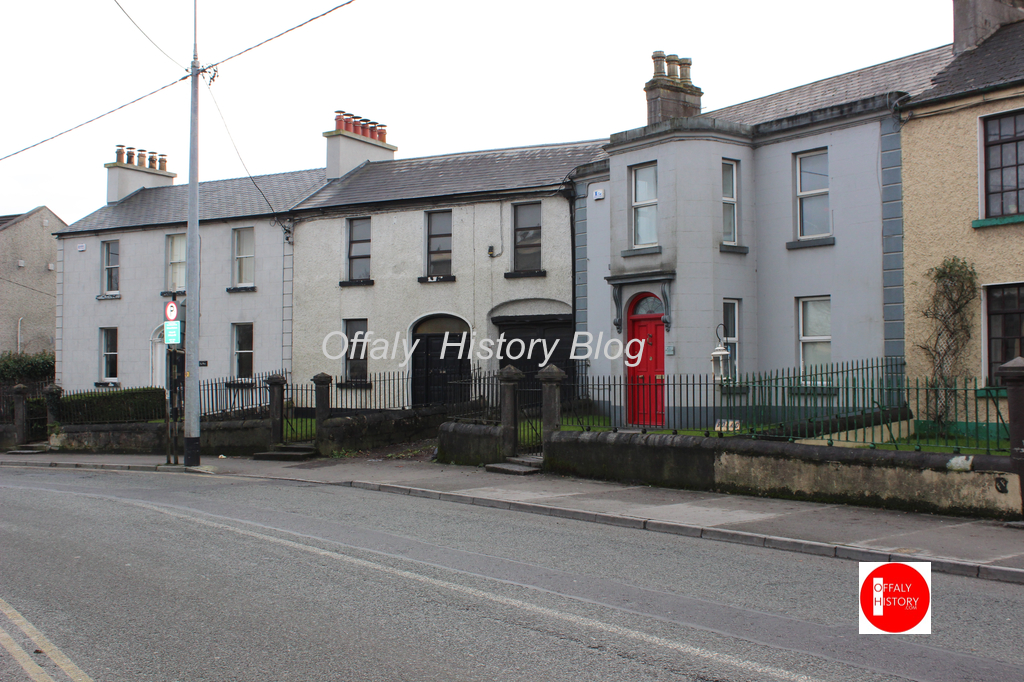
By 1870 the valuations of property in Earl Street reflected the intense variety of the housing stock in this location with the improvements at Moore Hall in 1868-9 bringing its house valuation to £32, followed by no.1 O’Moore Street (now Bannon’s) at £23, The Cottage at £14 and the Masonic Lodge at £9. Victoria Terrace was generally in the £7 valuation range while the six new two-storey houses between the Masonic Lodge and Tyrrell’s shop came in at c. £3 after construction/reconstruction in 1858. The houses from no. 1 to Victoria Terrace were mixed in valuation while the cottages east of Moore Hall and east of 29 High Street were low in value, from 12s. to £2 and were the poorest in the street. And so it can be said that apart from the three houses in the centre of the northern side of O’Moore Street, owned by their occupers, all others on that side were less than £4 in valuation. The very poorest in the vicinity of the Heffernan-built commercial units were removed in the 1840s or early 1850s while the block west of the Masonic Lodge was rebuilt in the late 1850s. The current unattractive units from 29 High Street to Tyrrell’s shop (1946) survived longer as poor quality housing only to be replaced by the four or five single-storey flat-roofed shop units which are inappropriate to this important location, and now understood to be converted to residential.
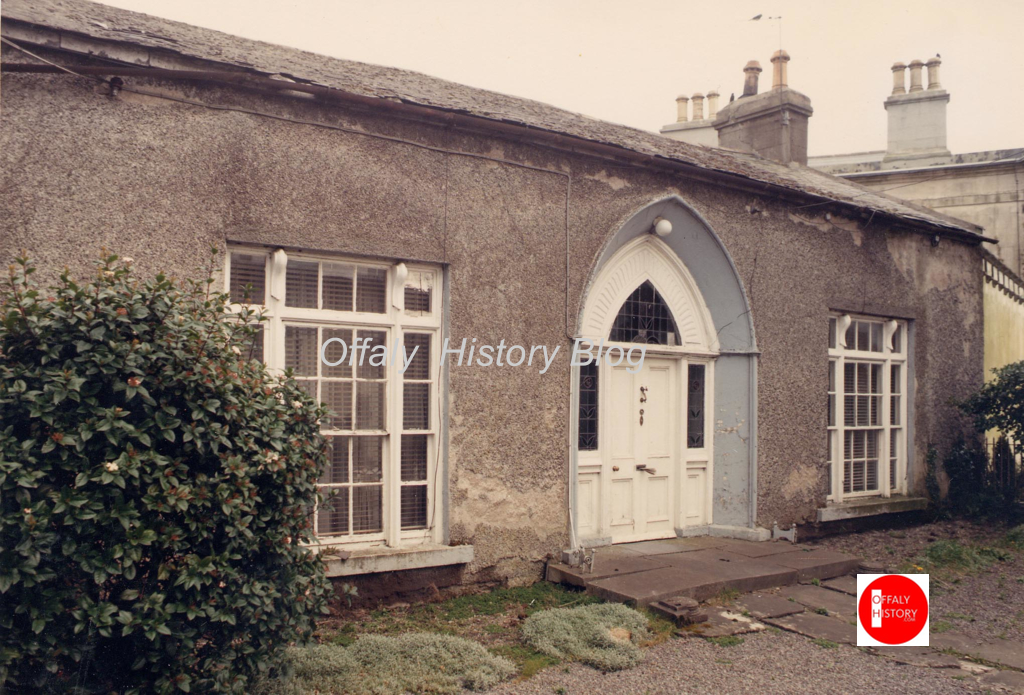
The nine houses on the south side of O’Moore Street from the junction with Cormac Street to Victoria Terrace were held from the Acres-Pierce estate on varying leasehold terms, but most of them were probably short leaseholds and three were vacant in 1854. All seven houses in Victoria Terrace were occupied in 1854 and more likely on long leaseholds but still subject to the c. £25 rent each per year. The valuation of the Pierce houses varied from £23 on the corner (now Bannon’s) to five lower than the £4 threshold for rate-paying occupiers. By contrast all of Victoria Terrace was in the range of £7. The attributed letting value of about £6 in 1843 for most of the Pierce houses was an average for this part of the street while the Victoria Terrace houses had an estimated yearly rental value of £12, a figure reduced by almost 20 percent by 1854.
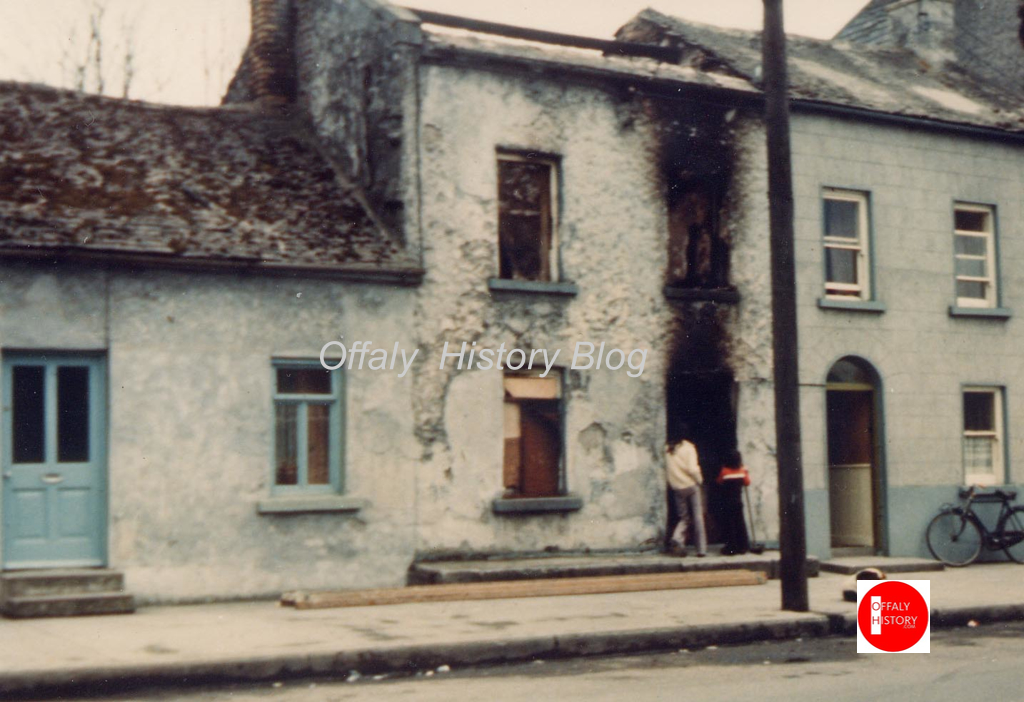
We welcome contributions to our blogs. Why not sit down and write an article between 750 and 1500 words including references and pictures as appropriate. Email us at info@offalyhistory.com. Have you memories of O’Moore Street, Cormac Street or Emmet Square Birr? These are top of our agenda right now but send in whatever history archaeology topic you wish to contribute.
